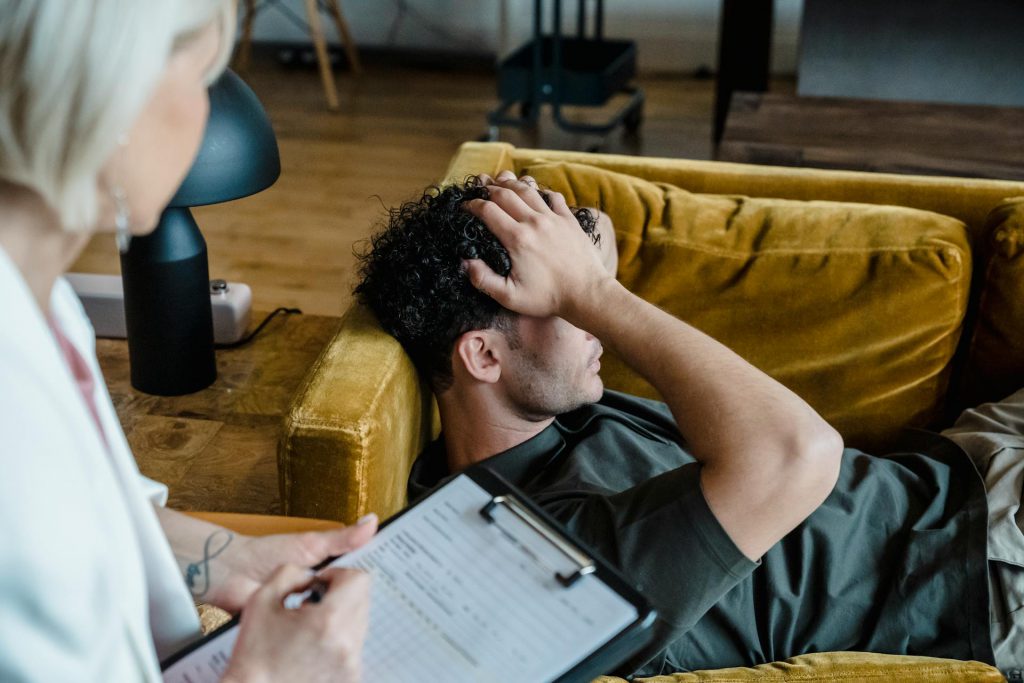Social Isolation Therapy
Social isolation therapy, while seemingly counterintuitive, has a history in treating certain mental health conditions. It involves intentionally limiting an individual’s social interactions for a specific period, under strict therapeutic supervision. While it can offer benefits in specific, carefully controlled situations, it also carries significant risks.
Historically, isolation was used in psychiatric institutions, often without ethical considerations. Modern applications, however, are far more nuanced. The core premise is that by removing external stimuli and social pressures, individuals can focus on internal processing and self-reflection. This can be particularly relevant in cases of severe anxiety, trauma, or certain psychotic disorders where external triggers exacerbate symptoms.
Time to feel better. Find a mental, physical health expert that works for you.
One potential benefit lies in its ability to reduce sensory overload. For individuals experiencing acute psychotic episodes or severe anxiety, a controlled, quiet environment can provide a sense of safety and calm. By minimizing external distractions, the individual can potentially gain better control over their thoughts and emotions. This can facilitate a period of stabilization, allowing for more effective therapeutic interventions.
Furthermore, isolation can provide a space for intensive self-reflection. Under the guidance of a therapist, individuals can explore underlying issues and develop coping mechanisms without the distractions of daily life. This can be particularly beneficial for individuals struggling with trauma or addiction, where processing painful experiences is crucial for recovery.
However, the risks associated with social isolation therapy are substantial. Prolonged isolation can lead to severe psychological distress, including depression, anxiety, and even psychosis. The human need for social connection is fundamental, and its deprivation can have profound negative consequences.
Ethical considerations are paramount. Strict protocols are essential to ensure the individual’s safety and well-being. This includes constant monitoring, regular therapeutic sessions, and clear guidelines for the duration of isolation. Informed consent is crucial, and the individual must be fully aware of the potential risks and benefits.
It is critical to emphasize that social isolation therapy is not a first-line treatment. It should only be considered in specific, severe cases where other interventions have proven ineffective, and under the strict supervision of experienced mental health professionals. The potential for harm necessitates a cautious and highly individualized approach. Ultimately, its use must be carefully weighed against the potential risks, prioritizing the individual’s long-term well-being.
What is Social Isolation?
Social isolation is a state characterized by a lack of social connections and interactions. It’s more than simply being alone; it’s a condition where an individual has minimal contact with others and feels a sense of detachment from their social environment. While sometimes confused with loneliness, they are distinct concepts.
Here’s a breakdown of what social isolation entails:
- Objective Lack of Social Contact:
- Social isolation is defined by the measurable absence of social interactions. This can include a low frequency of contact with family, friends, and community members.
- It involves a reduction in the number of social relationships and a lack of participation in social activities.
- Reduced Social Support:
- People experiencing social isolation often lack a support system to rely on during challenging times.
- This absence of emotional and practical support can exacerbate feelings of vulnerability and distress.
- Distinction from Loneliness:
- It’s crucial to differentiate social isolation from loneliness. Social isolation is an objective condition, while loneliness is a subjective feeling of being alone.
- A person can be socially isolated without feeling lonely, and conversely, they can feel lonely even when surrounded by others.
- Factors Contributing to Social Isolation:
- Various factors can contribute to social isolation, including:
- Age-related changes: Older adults may experience social isolation due to factors like retirement, loss of loved ones, and mobility limitations.
- Health conditions: Chronic illnesses, disabilities, and mental health disorders can restrict social participation.
- Geographic isolation: Living in rural areas or having limited access to transportation can hinder social interaction.
- Socioeconomic factors: Poverty, unemployment, and lack of resources can contribute to social isolation.
- Technological changes: While technology can connect people, it can also cause people to have less in person interactions.
- Various factors can contribute to social isolation, including:
- Health Implications:
- Social isolation has significant implications for both physical and mental health.
- It is associated with an increased risk of cardiovascular disease, depression, anxiety, and cognitive decline.
- It can also weaken the immune system and increase mortality risk.
- Social isolation has significant implications for both physical and mental health.
Understanding the nature of social isolation is essential for developing strategies to promote social connectedness and well-being
Types of Social Isolation
Social isolation, a complex and multifaceted condition, manifests in various forms, each with unique characteristics and underlying causes. Understanding these distinctions is crucial for developing targeted interventions and support systems. Here’s a breakdown of the primary types of social isolation:
- Situational Social Isolation:
This type is often temporary and triggered by specific life events or circumstances. Examples include:
- Geographic relocation: Moving to a new city or country can disrupt established social networks.
- Job loss or retirement: These transitions can lead to a decrease in daily social interactions.
- Bereavement: The loss of a loved one can create a profound sense of isolation.
- Hospitalization or illness: Prolonged periods of illness or hospitalization can limit social contact.
- Pandemics or natural disasters: These events can impose widespread social restrictions.
Situational isolation is often reactive, and individuals may regain social connections as they adapt to their new circumstances.
- Chronic Social Isolation:
This form of isolation is persistent and long-lasting, often stemming from deeper, more entrenched factors. These can include:
- Mental health disorders: Conditions like depression, anxiety, and social anxiety disorder can lead to avoidance of social interactions.
- Chronic illness or disability: Physical limitations can restrict social participation.
- Socioeconomic factors: Poverty, unemployment, and lack of access to resources can create barriers to social connection.
- Personality traits: Individuals with introverted or avoidant personality traits may naturally have fewer social interactions.
Chronic isolation requires more intensive and long-term interventions to address the underlying causes.
- Self-Imposed Social Isolation:
In some cases, individuals may intentionally withdraw from social interactions. This can be driven by:
- A desire for solitude: Some individuals genuinely prefer a solitary lifestyle.
- Avoidance of social anxiety: Individuals with social anxiety may avoid social situations to minimize discomfort.
- Negative past experiences: Trauma or negative social experiences can lead to a distrust of others and a desire to isolate.
- A form of coping mechanism: withdrawing can be used as a way to avoid stress.
While some degree of solitude can be beneficial, excessive self-imposed isolation can lead to negative consequences.
- Perceived Social Isolation:
This type of isolation is characterized by a subjective feeling of loneliness and disconnection, even when surrounded by others. Individuals may feel that their social relationships are lacking in quality or meaning. This form of isolation highlights the distinction between objective social contact and subjective feelings of connection. It is the feeling of being alone, regardless of the amount of people around.
Understanding the different types of social isolation is essential for tailoring appropriate interventions and support. Addressing the underlying causes, whether situational, chronic, self-imposed, or perceived, is crucial for promoting social connectedness and well-being.
Causes of Social Isolation
Social isolation, a state of reduced social interaction and a lack of meaningful connections, arises from a complex interplay of individual, social, and environmental factors. Understanding these causes is crucial for developing effective interventions and fostering social inclusion.
Individual Factors:
- Mental Health Conditions:
- Depression, anxiety, and social anxiety disorder can lead to withdrawal from social situations.
- Individuals with these conditions may experience fear of judgment, low self-esteem, and a diminished desire for social interaction.
- Physical Health Conditions:
- Chronic illnesses, disabilities, and mobility limitations can restrict social participation.
- Pain, fatigue, and other physical symptoms can make it difficult to engage in social activities.
- Personality Traits:
- Introversion, shyness, and avoidant personality traits can predispose individuals to social isolation.
- These traits may lead to a preference for solitude and difficulty initiating or maintaining social relationships.
- Age-Related Changes:
- Older adults may experience social isolation due to retirement, loss of loved ones, and declining health.
- Sensory impairments, such as hearing loss, can also hinder social interaction.
Social Factors:
- Lack of Social Skills:
- Individuals who struggle with communication, assertiveness, or conflict resolution may find social interactions challenging.
- This can lead to avoidance of social situations and a gradual decline in social connections.
- Social Stigma and Discrimination:
- Individuals belonging to marginalized groups, such as those with disabilities, LGBTQ+ individuals, or people from minority ethnic backgrounds, may experience social exclusion.
- Discrimination and prejudice can create barriers to social participation and belonging.
- Changes in Family Structure:
- Increased rates of divorce, single-parent households, and geographic mobility can weaken family ties.
- This can result in a lack of social support and increased feelings of isolation.
- Technological Changes:
- While technology can connect people, it can also contribute to social isolation by replacing face-to-face interactions.
- Excessive reliance on social media and online communication can lead to a decline in real-world social skills.
Environmental Factors:
- Geographic Isolation:
- Living in rural areas or having limited access to transportation can restrict social interaction.
- Lack of community resources and social activities can further exacerbate isolation.
- Socioeconomic Factors:
- Poverty, unemployment, and lack of access to resources can create barriers to social participation.
- Financial constraints can limit the ability to engage in social activities and maintain social connections.
- Unsafe Environments:
- Areas with high crime rates can cause people to stay inside, and therefore become socially isolated.
- Pandemics and Natural Disasters:
- These events can force people to isolate themselves, and cause a long term effect on social interaction.
Addressing the multifaceted causes of social isolation requires a holistic approach that considers individual needs, social dynamics, and environmental factors.
Symptoms of Social Isolation
Social isolation, while often defined by the absence of social interaction, manifests in a range of observable and felt symptoms. Recognizing these symptoms is crucial for early intervention and preventing the detrimental effects of prolonged isolation. These symptoms can be broadly categorized into emotional, behavioral, and physical manifestations.
Emotional Symptoms:
- Loneliness: This is perhaps the most prominent symptom. Individuals may experience a deep sense of emptiness and disconnection, even when surrounded by others.
- Depression: Social isolation significantly increases the risk of developing depressive symptoms, including persistent sadness, loss of interest in activities, and feelings of hopelessness.
- Anxiety: The lack of social support can heighten anxiety levels, leading to increased worry, fear, and nervousness, especially in social situations.
- Irritability and Anger: Frustration and resentment stemming from social disconnection can manifest as irritability and anger outbursts.
- Feelings of Worthlessness: Prolonged isolation can erode self-esteem, leading to feelings of inadequacy and worthlessness.
- Emotional Detachment: Some may experience a numbing of emotions or a sense of detachment from their own feelings and those of others.
Behavioral Symptoms:
- Withdrawal from Social Activities: Individuals may actively avoid social gatherings, phone calls, and other forms of interaction.
- Changes in Sleep Patterns: Insomnia or excessive sleepiness can be indicative of underlying emotional distress related to isolation.
- Changes in Appetite: Significant weight loss or gain can occur due to emotional distress and altered eating habits.
- Decreased Motivation: A lack of social engagement can lead to a decline in motivation and productivity in various aspects of life.
- Increased Substance Use: Some individuals may turn to drugs or alcohol as a coping mechanism for loneliness and emotional pain.
- Decline in Personal Hygiene: Neglecting personal hygiene can be a sign of low self-esteem and a lack of engagement with the outside world.
Physical Symptoms:
- Fatigue: Persistent tiredness and lack of energy can be associated with the emotional strain of social isolation.
- Weakened Immune System: Studies have shown that social isolation can weaken the immune system, making individuals more susceptible to illness.
- Increased Risk of Cardiovascular Problems: Social isolation has been linked to an increased risk of heart disease and stroke.
- Headaches and Muscle Tension: Physical manifestations of stress and anxiety can include headaches and muscle tension.
- Changes in blood pressure: Social isolation can cause changes in blood pressure, both high and low.
It’s important to remember that these symptoms can vary in intensity and presentation. Recognizing these signs early can facilitate timely intervention and support, mitigating the long-term consequences of social isolation.
Connect Free. Improve your mental and physical health with a professional near you

Why Seek Treatment for Social Isolation?
Social isolation, while sometimes perceived as a personal preference, carries significant risks to both mental and physical well-being. Seeking treatment is not a sign of weakness but a proactive step towards a healthier, more fulfilling life. The consequences of untreated social isolation can be profound, making intervention essential.
One of the primary reasons to seek treatment is the profound impact on mental health. Prolonged isolation significantly increases the risk of developing or exacerbating mental health conditions like depression, anxiety, and even psychosis. The lack of social interaction disrupts the brain’s natural reward system, leading to feelings of hopelessness and despair. Treatment can provide individuals with coping mechanisms, therapeutic support, and strategies to rebuild social connections, mitigating these risks.
Furthermore, social isolation negatively affects physical health. Studies have linked it to a weakened immune system, increased risk of cardiovascular disease, cognitive decline, and even premature mortality. The stress associated with loneliness and isolation can trigger inflammatory responses and disrupt hormonal balance, leading to a cascade of physical health problems. Addressing social isolation can, therefore, improve overall physical health and longevity.
Social isolation can also lead to a decline in cognitive function. The lack of social stimulation and interaction can negatively impact memory, attention, and executive function. Engaging in social activities and maintaining social connections provides mental stimulation, which is crucial for preserving cognitive health. Treatment can help individuals regain social confidence and re-engage with their communities.
Moreover, untreated social isolation can create a vicious cycle. The longer an individual remains isolated, the more challenging it becomes to re-establish social connections. Fear of judgment, lack of social skills, and feelings of inadequacy can perpetuate the cycle, making it increasingly difficult to break free. Professional treatment can provide a structured and supportive environment to address these challenges, gradually building confidence and social competence.
Seeking treatment is also about improving quality of life. Social connections are fundamental to human well-being. They provide a sense of belonging, purpose, and support. Re-establishing these connections can bring joy, fulfillment, and a renewed sense of meaning to life. Treatment offers tools and strategies to cultivate meaningful relationships and build a strong social network, enhancing overall life satisfaction.
Finally, seeking treatment is a preventative measure. Addressing social isolation early can prevent the development of more severe mental and physical health problems. It can also help individuals develop resilience and coping mechanisms to navigate future challenges, fostering long-term well-being. Therefore, seeking treatment for social isolation is not merely addressing a symptom; it’s an investment in a healthier, more connected future.
Signs You Need Treatment for Social Isolation
Recognizing the signs that you might need treatment for social isolation is crucial for preventing its long-term negative effects. Social isolation isn’t simply about being alone; it’s about a persistent lack of meaningful social connection that impacts your well-being. Here are some key indicators that professional help might be beneficial:
Persistent Loneliness and Emotional Distress:
One of the most significant signs is a chronic feeling of loneliness, even when surrounded by others. If you frequently feel disconnected, misunderstood, or emotionally detached, it’s a warning sign. This feeling is often accompanied by other emotional symptoms like persistent sadness, anxiety, or irritability. If these feelings are impacting your daily life, seeking treatment is advised.
Withdrawal from Social Activities:
Are you consistently avoiding social gatherings, phone calls, or interactions with friends and family? A gradual withdrawal from previously enjoyed social activities indicates a potential problem. If you find yourself making excuses to avoid social situations, this is a red flag.
Changes in Sleep and Appetite:
Significant changes in your sleep patterns, such as insomnia or excessive sleepiness, can be linked to emotional distress caused by isolation. Similarly, changes in appetite, including loss of appetite or overeating, can be signs that your emotional state is being affected.
Decreased Motivation and Productivity:
A noticeable decline in motivation and productivity, both at work and in personal life, can be linked to social isolation. If you find it challenging to focus, complete tasks, or engage in activities you once enjoyed, it’s worth considering professional help.
Increased Substance Use or Self-Neglect:
Turning to drugs or alcohol as a coping mechanism for loneliness and emotional pain is a serious sign. Neglecting personal hygiene or self-care routines can also indicate that you are struggling with the emotional burden of isolation.
Physical Symptoms:
Social isolation can manifest physically. If you experience persistent headaches, muscle tension, fatigue, or other unexplained physical symptoms, it could be your body’s way of signaling emotional distress.
Negative Self-Perception:
If you consistently have negative thoughts about yourself, such as feeling worthless, unlovable, or a burden to others, it can be a sign of deep-seated emotional distress linked to social isolation.
Difficulty Forming or Maintaining Relationships:
If you struggle to form new relationships or maintain existing ones, it might indicate underlying issues that need to be addressed. This can include social anxiety, lack of social skills, or negative past experiences that make you hesitant to connect with others.
If you recognize several of these signs, seeking professional help can provide you with the tools and support needed to rebuild social connections and improve your overall well-being.
Types of Therapy for Social Isolation
Social isolation, a complex issue with varied causes, requires a multi-faceted approach to treatment. Several therapy types can address the emotional, behavioral, and cognitive aspects of this condition, helping individuals rebuild social connections and improve their overall well-being.
Cognitive Behavioral Therapy (CBT):
CBT is a widely used therapy that focuses on identifying and changing negative thought patterns and behaviors
that contribute to social isolation. It helps individuals challenge distorted beliefs about themselves and social situations, such as “no one likes me” or “I’ll just embarrass myself.” CBT also teaches practical skills for managing anxiety and improving social interactions. This therapy can be particularly effective for individuals with social anxiety disorder or depression, which often underlie social isolation.
Social Skills Training:
This type of therapy focuses on developing and improving social skills, such as communication, assertiveness, and conflict resolution. It provides a safe and structured environment for individuals to practice and refine their social interactions. Through role-playing, feedback, and guided practice, individuals can gain confidence in their ability to engage in social situations. This is especially helpful for those who avoid social interaction due to a lack of confidence or perceived social awkwardness.
Group Therapy:
Group therapy offers a unique opportunity for individuals to connect with others who are experiencing similar challenges. It provides a supportive environment where individuals can share their experiences, learn from others, and develop a sense of belonging. Group therapy can also help individuals practice social skills in a safe and supportive setting.
Psychodynamic Therapy:
This therapy explores the underlying emotional and psychological factors that contribute to social isolation. It helps individuals gain insight into past experiences, unresolved conflicts, and unconscious patterns that may be influencing their current social difficulties. By addressing these root causes, individuals can develop a deeper understanding of themselves and their relationships.
Acceptance and Commitment Therapy (ACT):
ACT focuses on helping individuals accept their thoughts and feelings, rather than trying to avoid or suppress them. It encourages individuals to identify their values and commit to actions that align with those values, even in the face of difficult emotions. This therapy can be helpful for individuals who avoid social situations due to fear or anxiety.
Family Therapy:
If social isolation is impacting family dynamics, family therapy can be beneficial. It helps family members understand the complexities of social isolation and develop strategies to support the individual. It can also address any underlying family issues that may be contributing to the isolation.
Mindfulness-Based Therapy:
Mindfulness techniques, such as meditation and deep breathing, can help individuals manage anxiety and stress related to social situations. These therapies can help individuals become more aware of their thoughts and feelings, and develop a greater sense of calm and self-compassion.
The best type of therapy will depend on the individual’s specific needs and circumstances. A mental health professional can assess the individual’s situation and recommend the most appropriate treatment plan.
Exposure Therapy
Exposure therapy, a cornerstone of cognitive behavioral therapy (CBT), is a powerful tool for treating anxiety disorders, including those contributing to social isolation. It works by gradually exposing individuals to feared situations or stimuli, helping them to confront and overcome their anxieties. This systematic approach aims to reduce avoidance behaviors and desensitize individuals to triggers that provoke fear.
The core principle of exposure therapy is habituation.
By repeatedly facing feared situations in a controlled and safe environment, individuals learn that their anxieties are often exaggerated and that they can cope with the perceived threats. This process breaks the cycle of avoidance that perpetuates anxiety disorders.
Exposure therapy typically involves a structured hierarchy of feared situations, ranging from mildly anxiety-provoking to highly distressing. The therapist works with the individual to create this hierarchy, ensuring that the exposures are tailored to their specific fears. The process begins with the least anxiety-inducing situation, gradually progressing to more challenging scenarios as the individual gains confidence.
There are several types of exposure therapy:
- In vivo exposure: This involves direct exposure to real-life situations that trigger anxiety. For example, someone with social anxiety might start by having a brief conversation with a cashier and gradually progress to attending larger social gatherings.
- Imaginal exposure: This involves vividly imagining feared situations or stimuli. It is often used for individuals with post-traumatic stress disorder (PTSD) or when in vivo exposure is not feasible.
- Virtual reality (VR) exposure: VR technology provides immersive and realistic simulations of feared situations, allowing for controlled and safe exposure. This can be particularly helpful for individuals with phobias or anxiety related to specific environments.
- Interoceptive exposure: This focuses on exposing individuals to physical sensations that trigger anxiety, such as increased heart rate or shortness of breath. It helps them to distinguish between normal bodily sensations and panic symptoms.
During exposure sessions, the therapist guides the individual through the process, providing support and encouragement. They teach coping mechanisms, such as relaxation techniques and cognitive restructuring, to manage anxiety during exposures. The goal is to help individuals develop a sense of mastery over their fears and regain control over their lives.
Exposure therapy is not a quick fix. It requires commitment and persistence, and the process can be challenging at times. However, the long-term benefits are substantial. By confronting their fears, individuals can experience a significant reduction in anxiety symptoms and an improved quality of life. It can be particularly effective in breaking down the walls of isolation that anxiety can build.
Goals of Social Isolation Therapy
Social isolation therapy, while potentially controversial, aims to achieve specific therapeutic goals when used appropriately and ethically. It’s crucial to understand that this therapy is not about prolonged, punitive isolation, but rather a carefully controlled and temporary intervention designed to address particular psychological needs.
The primary goal of social isolation therapy is to provide a therapeutic environment that reduces overwhelming external stimuli. This can be particularly beneficial for individuals experiencing acute psychotic episodes, severe anxiety, or intense sensory overload. By minimizing distractions, the individual can gain a degree of internal calm, allowing for more effective therapeutic interventions.
Another key goal is to facilitate intensive self-reflection and introspection. By removing the distractions of daily life, individuals can focus on processing difficult emotions, traumatic experiences, or maladaptive thought patterns. This can be crucial for individuals struggling with trauma, addiction, or personality disorders, where deep self-exploration is essential for healing.
Social isolation therapy also aims to create a safe and contained space for individuals to regain a sense of control over their thoughts and emotions. In cases of severe anxiety or psychosis, external triggers can exacerbate symptoms, leading to a feeling of being overwhelmed. A controlled environment can provide a sense of security, allowing individuals to develop coping mechanisms and regain a sense of agency.
Furthermore, this therapy can be used to interrupt self-destructive behaviors. In situations where individuals engage in self-harm or other harmful behaviors, a period of isolation can provide a break from these patterns, allowing for the implementation of alternative coping strategies.
It is also important to note that a goal of the therapy is to provide a setting in which a therapist can have better control over a patients’ environment. This is especially true for patients who are a danger to themselves or others. This allows for constant monitoring and intervention when necessary.
However, it’s crucial to emphasize that these goals must be pursued within a framework of ethical and therapeutic guidelines. Social isolation therapy should never be used as punishment or for prolonged periods. It must be carefully monitored by experienced mental health professionals, with clear protocols in place to ensure the individual’s safety and well-being.
The duration of isolation should be strictly limited, and regular therapeutic sessions must be provided to support the individual’s emotional and psychological needs. The focus should always be on promoting healing, self-understanding, and the development of healthy coping mechanisms. Ultimately, the goals of social isolation therapy should be aligned with the individual’s long-term well-being and reintegration into a healthy social life.
What to Look for in a Social Isolation Therapist
Finding the right therapist is crucial for addressing social isolation effectively. It’s not just about qualifications; it’s about finding someone who understands the nuances of social disconnection and can provide tailored support. Here’s what to look for in a social isolation therapist:
Specialized Experience:
Look for a therapist with specific experience in treating social isolation, loneliness, and related conditions like social anxiety, depression, and trauma. They should demonstrate a deep understanding of the unique challenges associated with social withdrawal and have a track record of successful interventions.
Evidence-Based Approaches:
Ensure the therapist utilizes evidence-based therapies, such as Cognitive Behavioral Therapy (CBT), Social Skills Training, or Acceptance and Commitment Therapy (ACT). These approaches have been scientifically proven to be effective in addressing social isolation and its underlying causes.
Empathy and Understanding:
Social isolation often involves feelings of shame and vulnerability. A good therapist will create a safe and non-judgmental space where you feel heard and understood. They should demonstrate empathy, compassion, and a genuine desire to help you rebuild your social connections.
Strong Communication Skills:
Effective communication is essential for a successful therapeutic relationship. The therapist should be able to clearly explain treatment options, answer your questions, and provide ongoing support. They should also be skilled at active listening and creating a collaborative therapeutic environment.
Experience with Exposure Therapy:
If social anxiety is a significant factor, look for a therapist experienced in exposure therapy. This technique, when applied correctly, can be highly effective in gradually reducing anxiety related to social situations.
Cultural Sensitivity:
Social isolation can be influenced by cultural factors. A culturally sensitive therapist will understand and respect your cultural background, values, and beliefs. They will tailor their approach to meet your specific needs and avoid making assumptions based on cultural stereotypes.
Clear Treatment Plan:
A good therapist will work with you to develop a clear and personalized treatment plan. This plan should outline specific goals, strategies, and a timeline for progress. They should also regularly review and adjust the plan as needed.
Comfort and Trust:
Ultimately, the most important factor is finding a therapist you feel comfortable with. Trust your instincts and choose someone you feel you can build a strong therapeutic relationship with. This connection is essential for successful treatment.
Qualifications and Credentials:
Verify the therapist’s qualifications, licenses, and credentials. Ensure they are licensed to practice in your area and have the necessary training and expertise.
Accessibility and Practical Considerations:
Consider practical factors like location, availability, and cost. Choose a therapist whose services are accessible and affordable for you. Online therapy can be a viable option if in-person sessions are difficult.
Finding the right therapist takes time and effort, but it’s an investment in your well-being. By considering these factors, you can increase your chances of finding a therapist who can effectively support you in overcoming social isolation and building a more fulfilling social life.
How to Find a Social Isolation Therapist
Finding a therapist specializing in social isolation can feel daunting, but with a strategic approach, you can connect with a professional who understands your unique needs. Here’s a comprehensive guide to navigating the process:
- Start with Your Primary Care Physician:
Your primary care physician can be a valuable resource. They can provide referrals to mental health professionals in your network, ensuring you receive care from qualified individuals. They can also offer initial assessments and rule out any underlying medical conditions contributing to your social isolation.
- Utilize Online Therapist Directories:
Websites like Psychology Today, GoodTherapy, and the American Psychological Association (APA) offer online directories that allow you to search for therapists based on specialization, location, and insurance coverage. These directories often include therapist profiles, allowing you to learn about their experience and areas of expertise. Pay close attention to keywords like “social isolation,” “social anxiety,” “loneliness,” and “relationship issues.”
- Check with Your Insurance Provider:
Contact your insurance provider to obtain a list of therapists in your network. This will help you narrow down your search and ensure that your therapy sessions are covered. Ask about specific coverage for mental health services and any limitations or requirements.
- Seek Recommendations from Trusted Sources:
Reach out to trusted friends, family members, or support groups for recommendations. Personal referrals can provide valuable insights into a therapist’s approach and effectiveness. Remember, confidentiality is paramount, so only share what you’re comfortable revealing.
- Explore Community Mental Health Centers:
Community mental health centers often offer affordable therapy services, particularly for individuals with limited financial resources. These centers may have therapists specializing in social isolation and related conditions.
- Consider Online Therapy Platforms:
Online therapy platforms, such as BetterHelp and Talkspace, offer convenient and accessible mental health services. These platforms allow you to connect with licensed therapists remotely, providing flexibility and convenience. Look for platforms that specialize in anxiety, depression, and relationship issues.
- Conduct Initial Consultations:
Once you have a list of potential therapists, schedule initial consultations. This allows you to ask questions about their experience, approach, and fees. Pay attention to how comfortable you feel during the consultation. Trust your instincts and choose a therapist you feel you can build a strong therapeutic relationship with.
- Ask the Right Questions:
During consultations, ask specific questions about the therapist’s experience with social isolation, their treatment approach, and their availability. Inquire about their experience with exposure therapy and social skills training, if applicable.
- Consider Support Groups:
While not a replacement for therapy, support groups can provide valuable social connection and peer support. They can help you connect with others who understand your experiences and offer a sense of belonging.
Finding the right therapist may take time, but the effort is worthwhile. By utilizing these resources and conducting thorough research, you can connect with a professional who can help you overcome social isolation and build a more fulfilling social life.

Free consultations. Connect free with local health professionals near you.
Conclusion
In conclusion, social isolation, a pervasive and often debilitating condition, demands our attention and understanding. It’s not merely a matter of being alone; it’s a complex interplay of emotional, behavioral, and physical factors that can severely impact an individual’s well-being. From the subtle signs of withdrawal to the profound effects on mental and physical health, social isolation presents a significant challenge to individuals and society as a whole.
The diverse causes of social isolation, ranging from individual vulnerabilities to systemic societal issues, underscore the need for a multi-faceted approach. Addressing this issue requires a shift in perspective, moving beyond simplistic notions of solitude and acknowledging the intricate web of factors that contribute to disconnection. We must recognize that social isolation can stem from mental health conditions, physical limitations, socioeconomic disparities, and even technological advancements that, paradoxically, can create a sense of detachment.
The importance of seeking treatment cannot be overstated. Untreated social isolation can lead to a cascade of negative consequences, including depression, anxiety, cardiovascular problems, and cognitive decline. Early intervention and appropriate therapy can mitigate these risks and empower individuals to rebuild meaningful social connections. Whether through cognitive behavioral therapy, social skills training, or group therapy, professional guidance can provide the tools and support necessary to overcome the barriers to social engagement.
Finding the right therapist is a crucial step in this process. It involves careful consideration of qualifications, experience, and personal compatibility. Utilizing resources like online directories, physician referrals, and insurance networks can facilitate this search. Furthermore, recognizing the signs that indicate the need for professional help is essential for timely intervention.
Ultimately, combating social isolation requires a collective effort. We must foster a culture of inclusivity and empathy, promoting social connection and support within our communities. By understanding the complexities of social isolation, recognizing its symptoms, and providing access to effective treatment, we can help individuals reclaim their social lives and build a stronger, more connected society. The goal is not just to alleviate the symptoms of isolation, but to cultivate a sense of belonging and purpose, ensuring that everyone has the opportunity to thrive in a socially connected world.
Time to feel better. Find a mental, physical health expert that works for you.
Popular FAQs
What's the difference between loneliness and social isolation?
Social isolation is an objective condition characterized by a lack of social contact. Loneliness is a subjective feeling of being alone, regardless of the amount of social contact. You can be socially isolated without feeling lonely, and vice versa.
What are the main causes of social isolation?
Causes are varied and include mental health conditions (depression, anxiety), physical health limitations, age-related changes, lack of social skills, socioeconomic factors, geographic isolation, and even excessive technology use.
What are the symptoms of social isolation?
Symptoms can be emotional (loneliness, depression, anxiety), behavioral (withdrawal, changes in sleep/appetite), and physical (fatigue, weakened immune system).
Is social isolation bad for your health?
Yes, prolonged social isolation is linked to increased risks of mental health conditions, cardiovascular problems, cognitive decline, and even premature mortality.
When should I seek treatment for social isolation?
If you experience persistent loneliness, withdrawal from social activities, changes in sleep or appetite, decreased motivation, or increased substance use, consider seeking professional help.
What types of therapy are used to treat social isolation?
Common therapies include Cognitive Behavioral Therapy (CBT), Social Skills Training, Group Therapy, and Exposure Therapy.
How do I find a therapist who specializes in social isolation?
You can seek referrals from your primary care physician, use online therapist directories, check with your insurance provider, or explore community mental health centers.
Can technology make social isolation worse?
While technology can connect people, excessive reliance on online interactions can replace face-to-face communication, potentially worsening social isolation.
Can older adults be more susceptible to social isolation?
Yes, older adults may face increased risk due to retirement, loss of loved ones, declining health, and mobility limitations.
Can social isolation be treated?
Yes, with appropriate therapy and support, individuals can overcome social isolation and build meaningful social connections.
People also ask
Q: Can hypochondria be cured?
Q:What makes a person a hypochondriac?
Q: Is hypochondria a form of OCD?
Q:How to stop being hypochondriac?
NOTICE TO USERS
MindBodyToday is not intended to be a substitute for professional advice, diagnosis, medical treatment, or therapy. Always seek the advice of your physician or qualified mental health provider with any questions you may have regarding any mental health symptom or medical condition. Never disregard professional psychological or medical advice nor delay in seeking professional advice or treatment because of something you have read on MindBodyToday.
Share this article

Let us know about your needs

Quickly reach the right healthcare Pro

Message health care pros and get the help you need.
Popular Healthcare Professionals Near You
You might also like
What is Suicide Therapy?
, What is Suicide Therapy ? Everything you need to know Find a Pro Suicide Therapy Suicidal ideation and attempts […]
What is Sex Therapy?
, What is Sex Therapy ? Everything you need to know Find a Pro Sex Therapy Sex therapy is a […]
What is Sleep Disorder Therapy?
, What is Sleep Disorder Therapy ? Everything you need to know Find a Pro Sleep Disorder Therapy Sleep disorders […]





